Insights
The Laws of Attraction – Applying the Human Senses to your Office Design

The Spacio team share the secrets of how you can incorporate the 6 human senses into your workplace environment
The world of work continues to evolve, now more than ever, companies are continuing to adapt and embrace hybrid work models. This has often been driven by a desire to support employees’ work life balance but also opens the opportunities to attract talent with a much wider recruitment reach.
However, many organisations are recognising the benefits and value of having their employees in the office more regularly, even if it’s just 2-3 days a week. Having a strong in-office culture allows for more spontaneous creativity, cross-functional efficiency and most importantly collaboration – all of which can help to boost innovation and progress. It also increases employees’ sense of belonging, which is regarded by many as the important metric for success and talent retention.
In today’s competitive marketplace, nurturing a workplace experience that promotes an emotional connection with the business (and colleagues) can be the key to your next stage of growth. As you look towards 2024, have you considered the role your office will play in your business strategy?
Have you created the space to do your best work? to incentivise top talent to join your business? or simply empower your existing team to spend more time together and collaborating?
A sense of design –
We are often asked about how to approach creating such environments, and the consistent factor for us is always the human element. Attraction comes down to people, and the sense of belonging organisations wish to create.
So, our team wanted to share some of our secrets. Namely how we consider and apply the human senses when transforming a workspace from just ‘an office’ into a thriving and human-centric space for your people to do their best work.
TOUCH
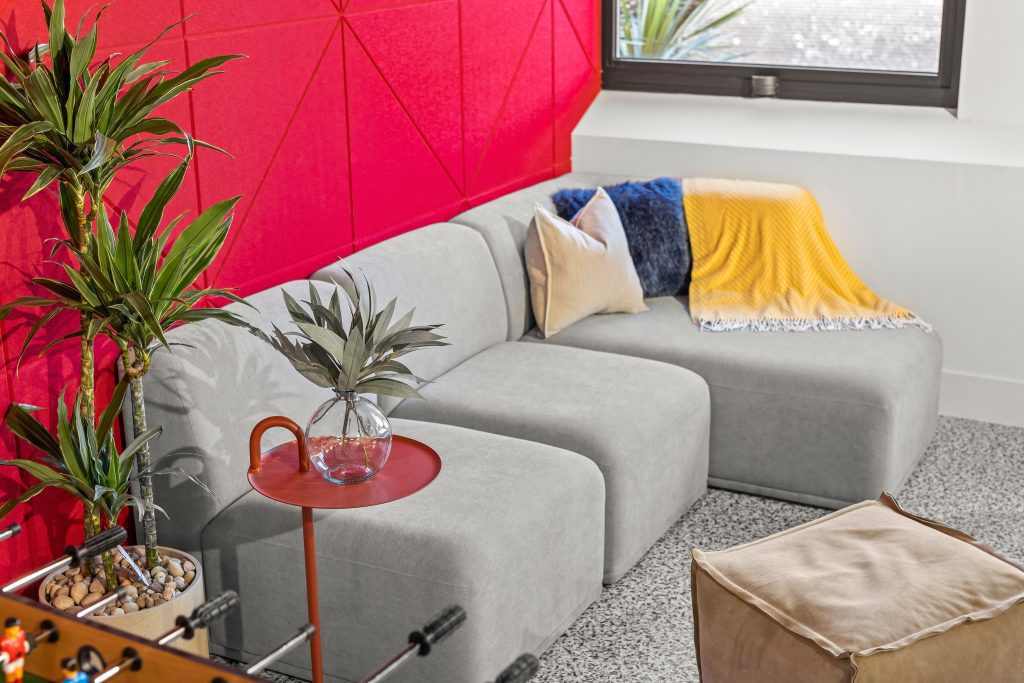
The sense of touch can be used to create a more comfortable and inviting office space for your people. For example, putting consideration into tactile elements like fabrics and furniture can really make your space feel more inviting, while providing ergonomic chairs and working areas can help employees avoid pain and discomfort.
A space that employees want to work in is one that they can feel comfortable being in. Remember you are competing with the sofa or home office of every single employee you have. A comfortable office environment should be filled with furniture that supports the way they work but also works with the natural movements of the human body.
Read the Full Blog Here –
SIGHT
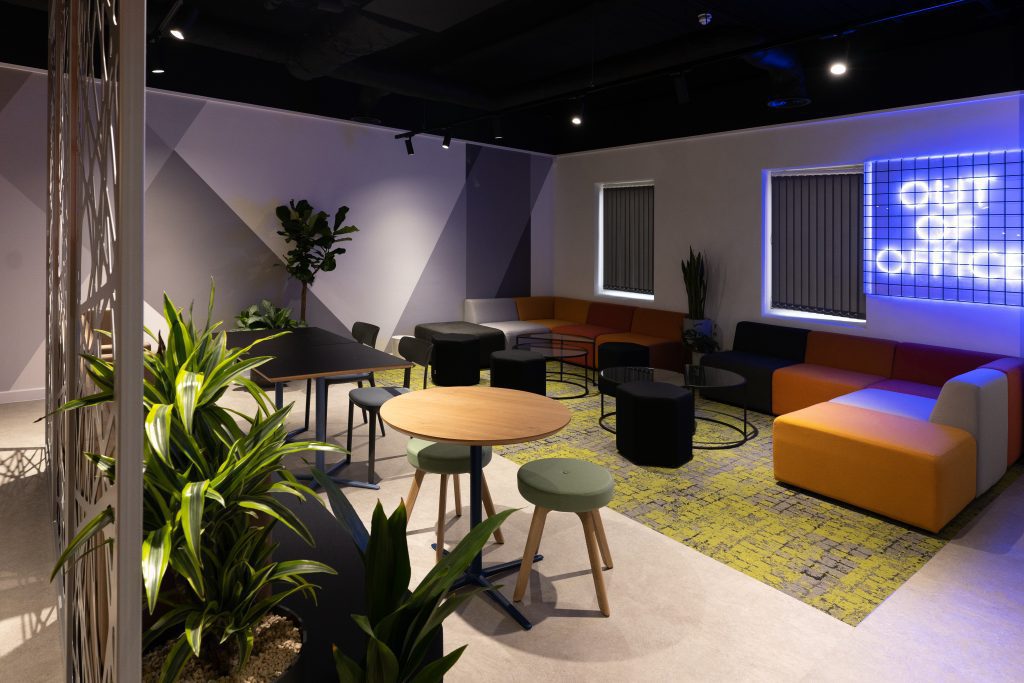
Use colour, light, and view lines to create a visually appealing and stimulating features. For example, bright colours can boost energy levels, while softer colours can promote relaxation. Natural light is also important for productivity, so try to incorporate as much of it into your office design as possible.
Think about optimal lighting. A well-designed office should not be floodlit by white lighting. It can make your space feel clinical and leave employees feeling sluggish or worn out as the day progresses. A good mix of natural and warm artificial lighting that is adjustable where possible creates an environment where your employees can adapt the lighting to their preference.
Read the Full Blog Here –
SOUND
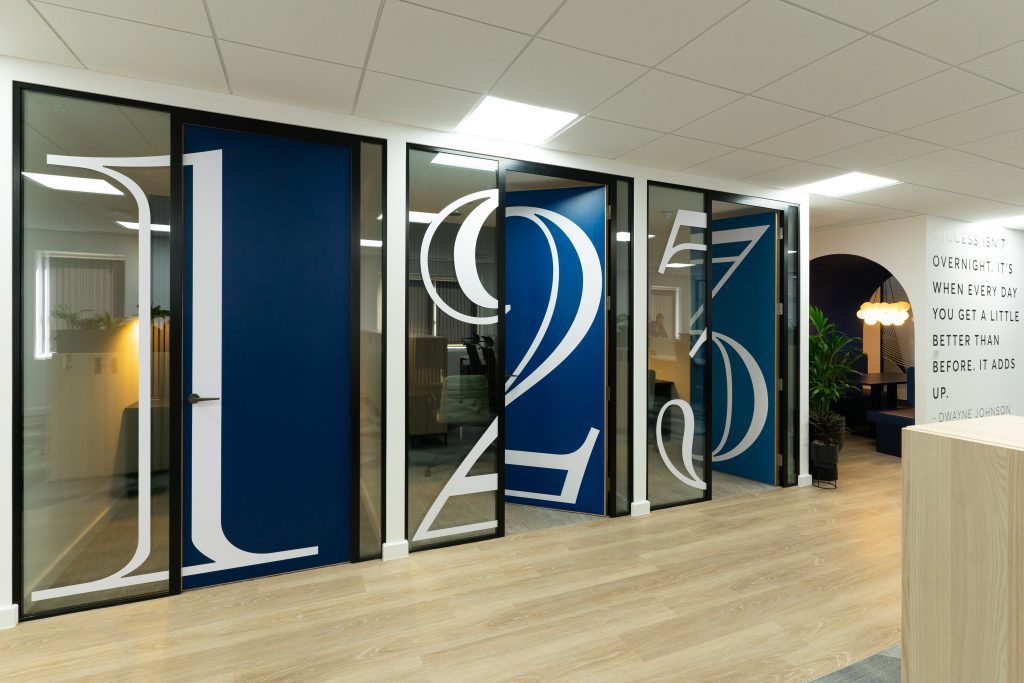
Consider the acoustics of your office space when making design decisions. Too much noise can be distracting and lead to decreased productivity, while too little noise can be isolating and depressing. Background music can also be used to create a more relaxing or stimulating atmosphere.
Noise can be a huge disruptor employee focus and productivity. Especially when the alternative could be a quiet, tranquil living room or home office. A comfortable office that can attract workers needs to pay careful attention to acoustics and how noise can be dampened with soundproofing materials, by creating dedicated spaces like video call booths, or quiet areas for focused working.
Read the Full Blog Here –
SMELL
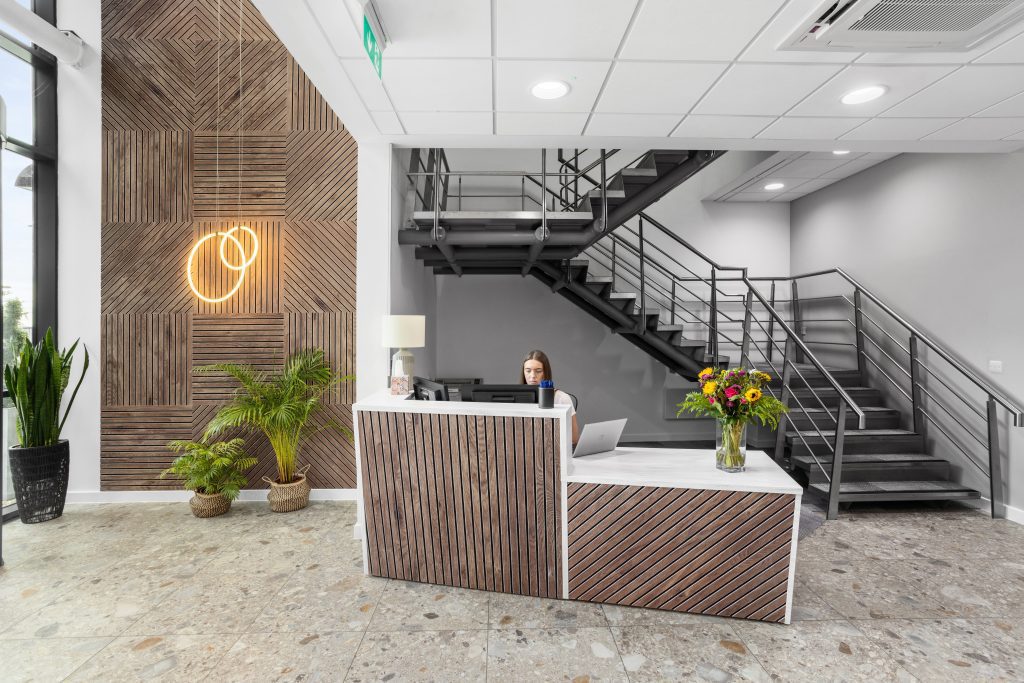
Ok, we agree this one might be a bit of a stretch but bear with us, we’ve got a nice narrative going. The sense of smell is closely linked to memory and emotion. You can use this to your advantage by incorporating pleasant scents into your office, even if it’s simply fresh flowers in your reception area. For example, lavender is known to promote relaxation, while peppermint can boost alertness.
Incorporating Biophilic elements into the office is a powerful feature and one that should be seriously considered when approaching an office redesign or refresh. There are some fantastic health benefits to work surrounded by nature. From reducing stress levels to improved cognitive function due to increased oxygen in the air.
Read the Full Blog Here –
TASTE
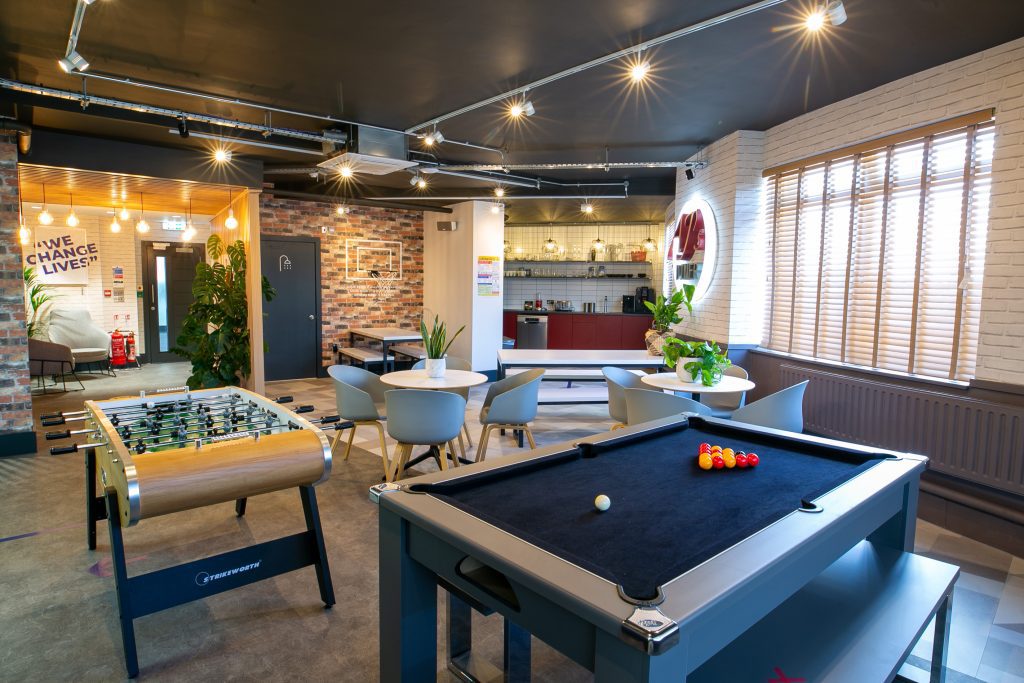
While taste is not typically a major factor in office design, there are a few ways to incorporate it. For example, providing healthy snacks and beverages can help employees stay energised and focused. You could also consider installing a coffee bar or espresso machine to give employees a caffeine boost when they need it.
We also like to associate taste as driver of aesthetics. Simply put, if your office is visually appealing it can create a positive atmosphere. Having an office that looks homely and inviting stimulates your people and helps them to feel that coming into the office is a positive experience and creates a mood that will translate into their work. It can also foster a sense of purpose, positive feelings toward your brand, and creates a great first impression for prospective talent and visiting clients.
Read the Full Blog Here –
PROPRIOCEPTION
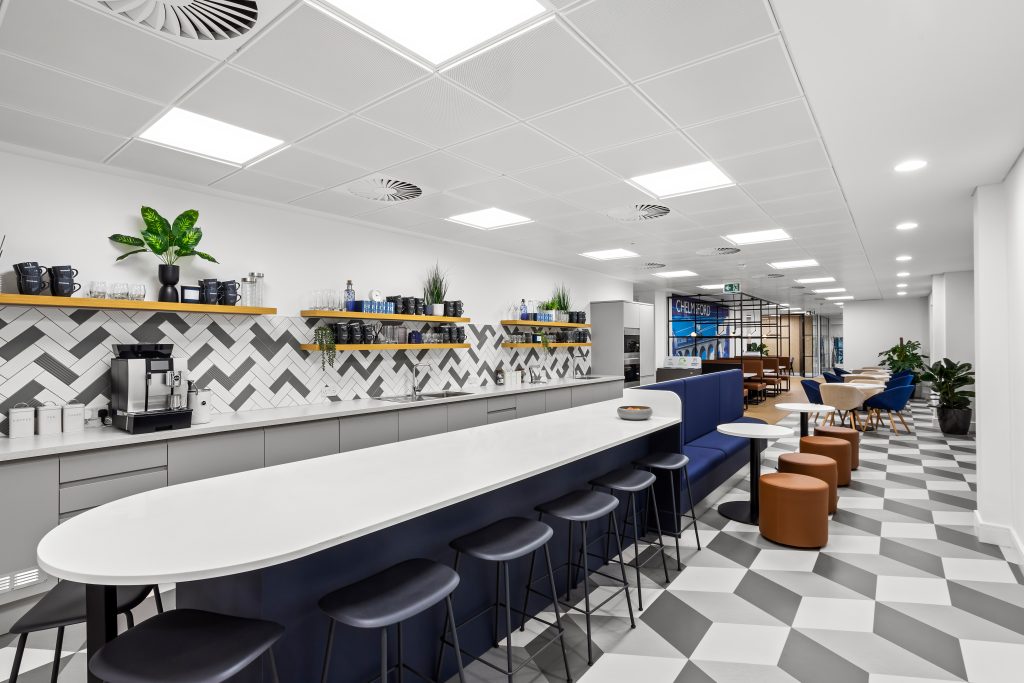
The lesser-known 6th sense, proprioception, or kinaesthesia, is the sense that lets us perceive where your body is in space… as well as movement and the perception of joint position, muscle force, and effort.
This sense can be important for employee focus and productivity. For example, providing employees with adjustable work spaces can help them find a comfortable position that allows them to work effectively. Creating naturally flowing, collaborative and considered layouts can provide fantastic benefits to how people work, how departments interact and really enhance the ‘feng shui’ of your space.
Every project Spacio approaches is driven by an understanding of how people move within space. By looking at how a business works, how their people interact and collaborate we can ensure that the space provides the perfect balance of form and function. This can include situating departments together, creating collaborative spaces between them or positioning furniture in ways that encourage conversation and interaction. Employees will always be more inclined to spend time in the office when they have the social element that they cannot get working in isolation.
Summary
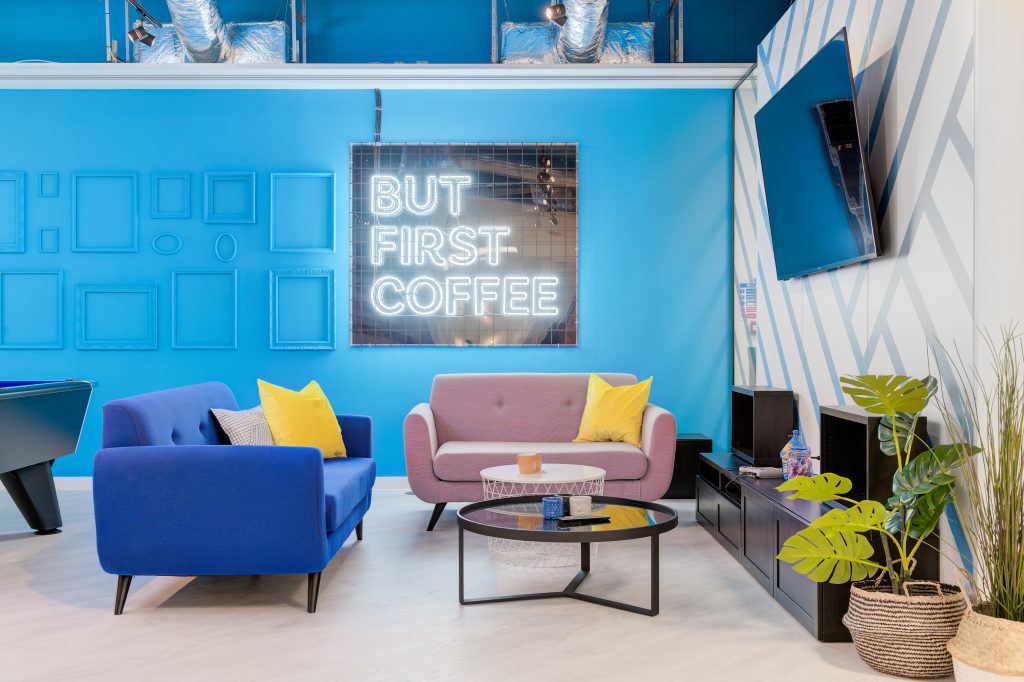
The human senses are powerful tools at your disposal and can have a profound impact on your employees’ thoughts, feelings, and behaviours. Fundamentally your office design can play a significant role in employee productivity, satisfaction, and well-being.
So, try incorporating the six human senses into your office environment to create a space that is both aesthetically pleasing and efficiently functional for your business. If you are looking to transform or refresh your working environment into a space for you to do your best work, then reach out to our team of designers and space planners us today!
Got a project in mind?
Let’s create a plan to achieve your objectives.
Contact us today to learn more about our workplace design, space planning, office fit out services and how we can help you to unlock your office’s full potential.
Let’s create the space to do your best work.